
22 Oct Genealogy- Newsletter- October 21, 2023
Contents
- 1 GENEALOGY- THE OTHER JOHN ADAMS
- 2 GENEALOGY- A TOLL TRAIL IN THE GRAND CANYON?
- 3 GENEALOGY- THE ONLY TWO BROTHERS TO HAVE SIGNED THE DECLARATION OF INDEPENDENCE
- 4 GENEALOGY- PRESERVED FISH
- 5 GENEALOGY- ONE OF OUR CLIENTS RECENTLY FOUND OUT THAT THEY DESCENDED FROM TEXAS NOBILITY
- 6 GENEALOGY- ARIZONA WAS THE 12th CONFEDERATE STATE
- 7 GENEALOGY- WHAT ABOUT YOUR ANCESTORS?
 GENEALOGY- THE OTHER JOHN ADAMS
GENEALOGY- THE OTHER JOHN ADAMS
John Adams (February 1, 1745 [O.S. January 21, 1744] – March 26, 1849), not to be confused with President Adams, on his 100th birthday in Ashburnham, making him possibly the earliest-born person photographed. He was a shoemaker and veteran of the American Revolution. The picture is a photographic copy of the original daguerreotype in the possession of the Susquehanna County Historical Society.
John Adams was born on February 1, 1745 [O.S. January 21, 1744] in Worcester, then part of the Province of Massachusetts Bay, to Captain Thomas Adams and Lydia Chadwick. He moved to Ashburnham, Massachusetts in 1766. There, Adams became a permanent resident and was frequently elected as a selectman and assessor. He married Joanna Munroe in Lexington, Massachusetts, on July 9, 1770. After she died in 1822, Adams married Lucy Simonds Munroe, the widow of his first wife’s half-brother.
Adams fought in the Continental Army during the American Revolution. He enlisted in Whitcomb’s Regiment for ten days shortly after the Battles of Lexington and Concord on April 19, 1775. On July 6, 1780, Adams received a commission as a lieutenant in the 8th Worcester County Militia, where he served in Captain Francis Lane’s company. Adams never applied for a pension.
Adams later moved to Harford, Pennsylvania, where his son, James, lived. On his 100th birthday, Adams returned to Ashburnham and posed for a daguerreotype portrait, making him possibly the earliest-born person to have been photographed alive. His date of birth surpasses that of Conrad Heyer, who is often credited as the earliest-born person photographed. However, there are photographs of others who claimed to have been born earlier, including Baltus Stone, a veteran of the American Revolution whose date of birth is given between 1743 and 1754, Caesar, an enslaved man allegedly born in 1737, and a man named John Owen, supposedly born in 1735 or 1741.
According to local accounts, Adams’ hearing was perfect until two years before his death, and he could read without glasses. A shoemaker, Adams made a pair of shoes for himself in his last year. Adams died in Harford on March 26, 1849, aged 104.
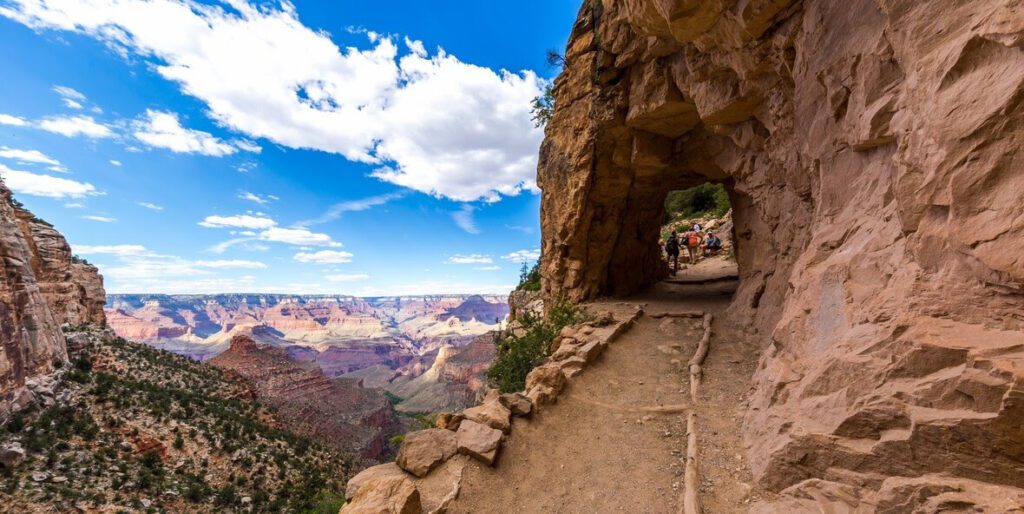 GENEALOGY- A TOLL TRAIL IN THE GRAND CANYON?
GENEALOGY- A TOLL TRAIL IN THE GRAND CANYON?
The Havasupai people originally built the upper part of the Bright Angel trail for access to the perennial water source of present-day Garden Creek. The Havasupai settled seasonally in this area, previously known as the Indian Garden (or Indian Gardens). 1903, President Theodore Roosevelt ordered them to leave the area to make way for a park. However, it was not until 1928 that the last Havasupai left, forced out by the National Park Service.
In November 2022, the U.S. Board on Geographic Names approved a name change to Havasupai Gardens, requested by the National Park Service on behalf of the Havasupai tribe, who regarded the old name as offensive and a painful reminder of past injustices. A ceremony highlighting the new name was planned for spring 2023.
Ralph H. Cameron, later a United States senator (R-AZ 1921–27), settled on the canyon rim in 1890 and began improving the old Havasupai trail. At this time, the trail was extended to the Colorado River. Once official control of the trail fell to Cameron, he named it the Bright Angel Trail, commonly referred to in its early years as Cameron’s Trail. He began charging a $1 toll to access it, plus additional fees for drinking water and using outhouses at Havasupai Gardens.
Ellsworth Kolb arrived at the Grand Canyon to work at the Bright Angel Hotel in 1901. He was employed as a bellboy. The following year, Ellsworth invited his brother Emery to come to the canyon as the possibility of mine work opened up. However, John Hance’s asbestos mine closed before he arrived, leaving Emery unemployed.
Emery discovered a photography business for sale shortly after this in Williams, Arizona. He purchased the business for US$425 (equivalent to about $14,400 in 2022) and moved the operation back to the Grand Canyon. He and Ellsworth began taking photographs of visitors who took the mule rides down Cameron’s trail, charging a fee for the pictures. The Cameron family leased a small piece of land near Emery, where the two brothers set up a photography studio in a tent to develop and sell their photos.
The business was profitable, and after a few years, the Kolb brothers built their permanent studio building on the canyon’s rim. Rock was blasted away to provide the foundation for the building, which is perched slightly below rim level.
Ellsworth left the venture in 1924, but Emery continued operating the studio until he died in 1976. The Grand Canyon Association operates the present-day Kolb Studio as a gift shop, art studio, and history center.
To compete with Cameron, the Atchison, Topeka, and Santa Fe Railway improved an existing horsethief trail in Hermit Canyon (the Hermit Trail) in 1911. In 1924, the newly created National Park Service began constructing the South Kaibab Trail near Yaki Point as an additional bypass for Cameron’s tolls.
After many legal battles, the trail was turned over to the National Park Service in 1928.

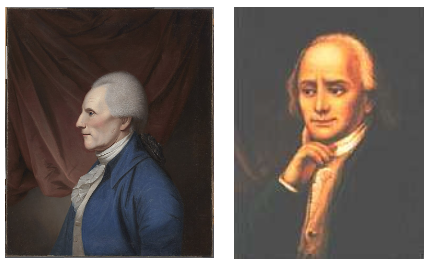
GENEALOGY- THE ONLY TWO BROTHERS TO HAVE SIGNED THE DECLARATION OF INDEPENDENCE
Richard Henry Lee (on left above) (January 20, 1732 – June 19, 1794) was an American statesman and Founding Father from Virginia, best known for the June 1776 Lee Resolution, the motion in the Second Continental Congress calling for the colonies’ independence from Great Britain leading to the United States Declaration of Independence, which he signed. Lee also served a one-year term as the president of the Continental Congress, was a signatory to the Continental Association and the Articles of Confederation, and was a United States Senator from Virginia from 1789 to 1792, serving part of that time as the second president pro tempore of the upper house.
His younger brother (on right above), Francis Lightfoot Lee (October 14, 1734 – January 11, 1797) was a Founding Father of the United States and a member of the House of Burgesses in the Colony of Virginia. As an active protester regarding issues such as the Stamp Act of 1765, Lee helped move the colony toward independence from Britain. Lee was a delegate to the Virginia Conventions and the Continental Congress. He was a signer of the Declaration of Independence and the Articles of Confederation as a representative of Virginia. In addition to his political career, Lee owned a tobacco plantation and many slaves.
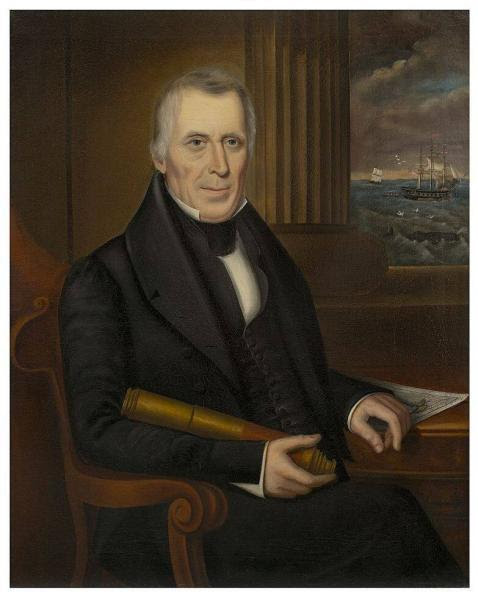 GENEALOGY- PRESERVED FISH
GENEALOGY- PRESERVED FISH
Preserved Fish (1766 – 1846) was a prominent New York City shipping merchant in the early 19th century. He was an early broker of the New York Stock & Exchange Board.
Preserved Fish was born in Freetown, Massachusetts, to blacksmith Isaac Fish and Ruth Grinnell Fish. His extended family, prominent in New York, also led to Hamilton Fish, governor, senator, secretary of state, and Stuyvesant Fish. He was descended from Thomas Fish, who settled in New England in 1643. There were at least ten other Fish family members with the Quaker given name Preserved, whose lineages are often confused. The name is pronounced with three syllables: /prəˈzɜːrvɪd/ or /prəˈsɜːrvɪd/; it refers to being “preserved (saved) from sin”.
As a youth, Fish shipped to the Pacific on a whaler, becoming its captain at 21. He soon realized fortune lay in selling whale oil, not harvesting it.
He prospered as a merchant in New Bedford, Massachusetts, but had a political quarrel and left for New York. He and Joseph Grinnell controlled a potent shipping firm named Fish & Grinnell – later Grinnell, Minturn & Company – which began in his efforts to expand his whale oil market. In 1812, he became a director of Bank of America (unrelated to the current institution), founded after the First Bank of the United States charter was not renewed. He also was one of the 28 New York Exchange Board brokers, which later became the New York Stock Exchange.
After he resigned from Fish & Grinnell and a brief retirement from business, he served from 1836 to his death as President of the Tradesman’s Bank and president of the Bank of America, which was unrelated to the current institution of that name. He was also involved with Tammany Hall: along with Gideon Lee, another banker, his faction controlled the Democratic Party in New York City at the time that the Locofoco reformers attempted, unsuccessfully, to take it over. He was one of the leaders in the movement opposed to Sabbatarianism in the United States.
Looking at his genealogy, Fish was married three times. His first wife, Abigail Clark Fish, died in New Bedford while giving birth to a child who did not live. His second wife, Mary Polly Fish (Gerrish), died in New York City. He married his third wife, Mary Shepherd Fish, just four months later.
None of Fish’s children survived; however, he had an adopted son named William Fish, who reportedly died before his father did as “a disgraced man.” William had one child in line to inherit most of Fish’s property on the condition that “the youth must renounce his mother on arriving at the age of twenty-one.”
In later life, Fish was a member of the Episcopal Church. He died on July 23, 1846, in New York. He is buried in the New York City Marble Cemetery. His obituary called him “a rough, obstinate, and eccentric man” but said he was “without guile” and “charitable”, as well as a faithful friend.
You can see below what a reader in 1801 thought of Preserved Fish’s name.
More on Preserved Fish in this newsletter:
https://dancestorsgenealogy.com/dancestors-genealogy-newsletter-october-16-2021/

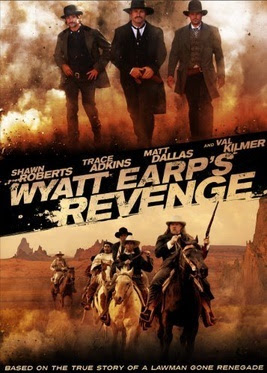
GENEALOGY- ONE OF OUR CLIENTS RECENTLY FOUND OUT THAT THEY DESCENDED FROM TEXAS NOBILITY
Our client wondering about her genealogy, wanted to know who her paternal grandparents were. After using her DNA, we determined that her Great-great-grandmother had married Mifflin Kenedy, who Trace Adkins played in the movie Wyatt Earp’s Revenge (poster above).
Mifflin Kenedy was one of the three great ranchers of far South Texas, the others being his close friends Richard King and Major John Armstrong. Though a Quaker from Pennsylvania, he never let religion get in his way. He met and fell in love with a beautiful 26-year-old devout Catholic from Mier, Mexico, Petra Vela de Vidal. Depending on which version of history you believe, Petra was the wife, mistress, or widow of Luis Vidal, a captain in the Mexican army. Some historians believe that Kenedy arranged the murder of Luis, who had already fathered at least six children by Petra. Kenedy moved his bride to Brownsville, where they had six more children. Most of their sons lived fast and died young. Tom Kenedy, the eldest, was killed by a deputy sheriff in Brownsville whose estranged wife the young ranching heir was courting. Adrian Vidal, Mifflin’s adopted son, was executed in a Mexican prison while the captain stood helplessly outside the prison walls. After driving a herd of cattle to Dodge City and fighting with the town’s mayor, James Kenedy barely survived a shoot-out with a posse that included Wyatt Earp and Bat Masterson, only to succumb later to typhoid fever. When Mifflin died intestate in 1895, the 400,000-acre ranch ended up in the hands of his sole surviving son, John Gregory Kenedy, known as Don Gregorio.
The dynasty might have gone on indefinitely, except that neither of Don Gregorio’s two surviving children produced an heir. John G. Kenedy Jr., known all his life as Johnny, was a boozer and a womanizer who died in 1948 in Saltillo, the home of his Mexican-born wife, Elena, who inherited his half fortune. According to family legend, Johnny was rendered sterile by a childhood case of the mumps, and his sister, Sarita, the last of the Kenedy’s, died childless in 1961, leaving the bulk of her estate to the John G. and Marie Stella Kenedy Memorial Foundation, named for her parents. Elena died in 1984, leaving her estate to the John G. Kenedy Jr. Charitable Trust. Administrators and lawyers handle the two institutions; together, they control assets valued between $500 million and $1 billion, of which about 80 percent of the income goes to the Catholic Diocese of Corpus Christi, the Christus Spohn Health System, and various Catholic charities. In the final years of her life, Sarita was attended by several ambitious men, including clerics, with designs on her millions. “Vultures,” she called them. Lawsuits over her fortune began two months after her death and continue to this day.

 GENEALOGY- ARIZONA WAS THE 12th CONFEDERATE STATE
GENEALOGY- ARIZONA WAS THE 12th CONFEDERATE STATE
Arizona Territory, colloquially referred to as Confederate Arizona, was an organized incorporated territory of the Confederate States that existed from August 1, 1861, to May 26, 1865, when the Confederate States Army Trans-Mississippi Department, commanded by General Edmund Kirby Smith, surrendered at Shreveport, Louisiana. However, after the Battle of Glorieta Pass, the Confederates had to retreat from the territory, and by July 1862, effective Confederate control of the territory had ended. Delegates to the secession convention had voted in March 1861 to secede from the New Mexico Territory and the Union, and seek to join the Confederacy. It consisted of the portion of the New Mexico Territory south of the 34th parallel, including parts of the modern states of New Mexico and Arizona. The capital was Mesilla, along the southern border. The breakaway region overlapped Arizona Territory, established by the Union government in February 1863.
Arizona was proclaimed a Confederate territory on August 1, 1861, after Colonel John R. Baylor’s victory at the Battle of Mesilla. His hold on the area was broken after Glorieta Pass (March 26–28, 1862), the defining battle of the New Mexico Campaign. In July 1862, the Confederate territorial government withdrew to El Paso, Texas. With the approach of Union troops, it relocated to San Antonio, where it remained for the duration of the civil war. The territory continued to be represented in the Confederate States Congress, and Confederate troops continued to fight under the Arizona banner until the war ended.
The political geography of the two Arizona Territories differed in that the Confederate Arizona was approximately the southern half of the historic New Mexico Territory, while the Union-defined Arizona Territory was approximately the western half of what had been New Mexico Territory, which became the basis for present-day Arizona.
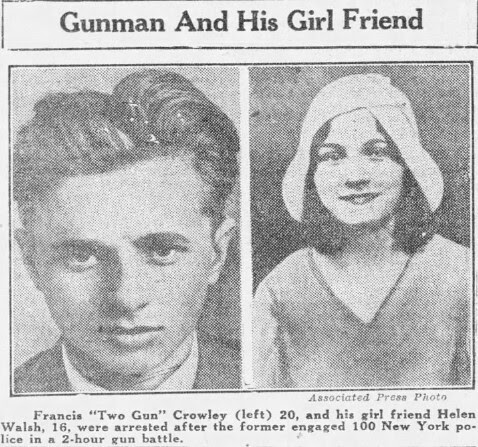
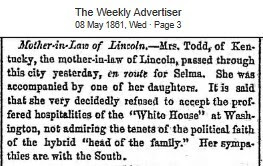
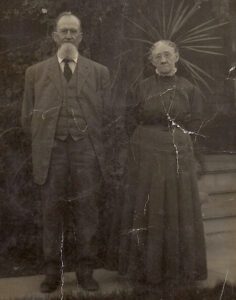 GENEALOGY- WHAT ABOUT YOUR ANCESTORS?
GENEALOGY- WHAT ABOUT YOUR ANCESTORS?
Reach out to Dancestors to research, discover, and preserve your family history. No one is getting any younger, and stories disappear from memory every year and eventually from our potential ability to find them. Paper gets thrown in the trash; books survive! So do not hesitate and call me @ 214-914-3598.

